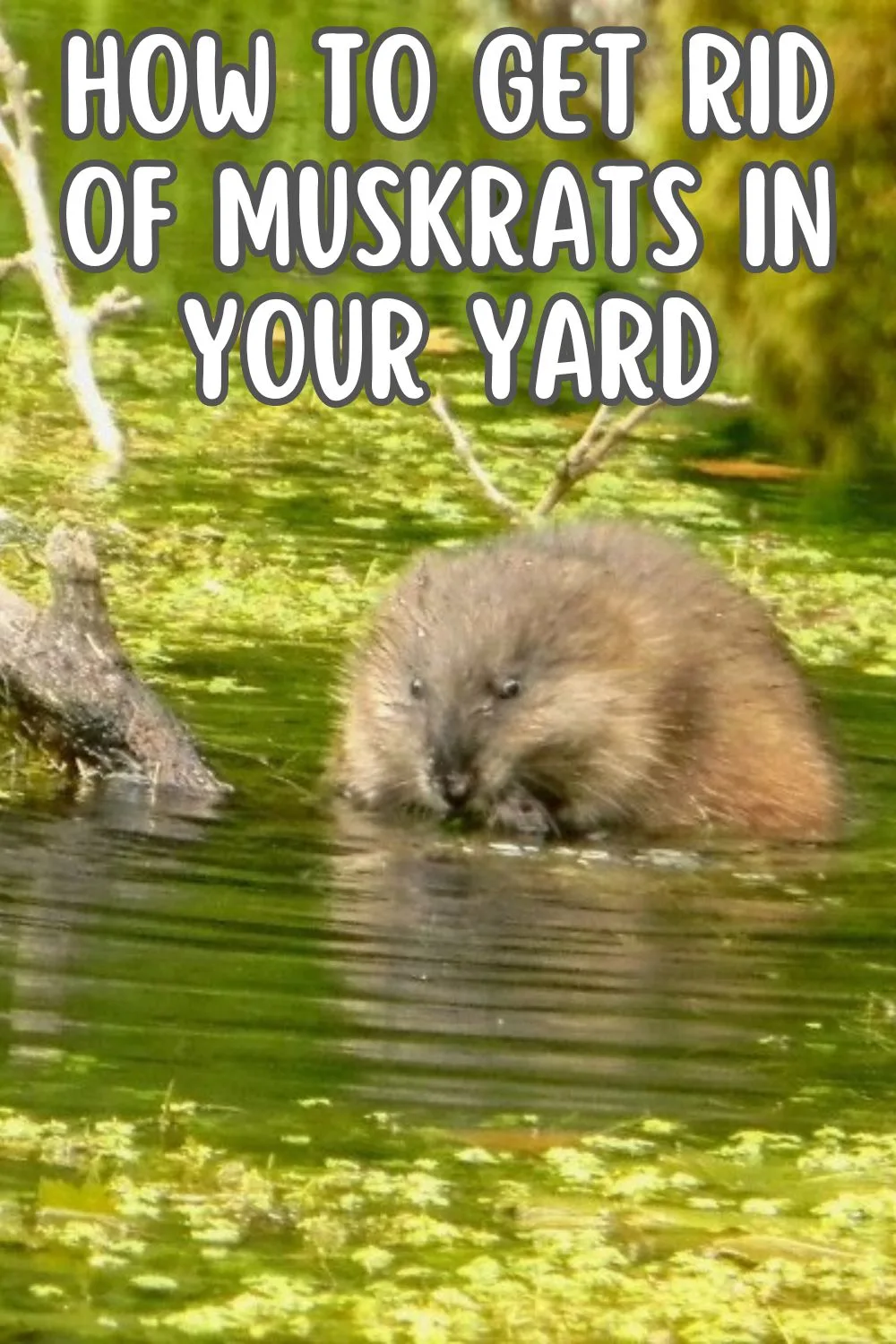Although they play an important role in native ecosystems, muskrats can cause significant damage with their foraging and burrowing. This semi-aquatic rodent looks like a small beaver with brown fur, a thick body, and large, partially webbed hind feet. Adult muskrats average two and a half pounds and two feet long, including their long, black, mostly hairless, vertically flattened tail.
Seldom venturing far from water, muskrats are commonly found in or near slow-moving water such as ponds, lakes, marshes, and streams. They burrow into ponds or stream banks or build houses with vegetation; they sometimes move into abandoned beaver lodges. Though typically nocturnal, muskrats are occasionally active in daylight hours as well. They reproduce rapidly, giving birth to up to three litters of four to seven babies each in a single year.
How to Identify Muskrat Damage
A muskrat’s favorite foods include the stems and roots of aquatic plants like cattails and the occasional crayfish or freshwater mussels. However, when these options are scarce, muskrats may venture further onto land for apples, legumes, grains, and root vegetables from your garden. Muskrats can also damage pond and stream banks with their burrowing, causing seepage, bank erosion, and even bank collapse. In ornamental ponds, they eat ornamental plants, possibly koi fish and other small animals.
It’s always important to properly identify a nuisance animal before taking action. If you have a pond or stream in your yard or live near a slow-moving water source, you may experience problems with muskrats. In addition to identifying the animal itself, look for the following signs to confirm their presence and that they are causing damage:
- partially eaten plants in or near water
- chew marks on trees and wood near the water
- pellet-like droppings along the shore
- muddy trails leading into the water
- domes of vegetation and mud close to the banks or above the water level
- floating platforms made of twigs and other vegetation
Muskrat burrows are difficult to identify, as the entrances tend to be six to 10 inches underwater.
How to Get Rid of Muskrats in Your Yard
Getting rid of muskrats will be easier if the water source where they live is located on your property. But even if you do not own the water source, you can still use several effective methods to get rid of muskrats in your yard. Regardless, using two or more of the following options together will likely have the greatest effect.
1. Trapping
Trapping is the most effective muskrat control method, and it can be as easy as calling a local wildlife control office or pest control company. If you prefer to do it yourself, you can purchase live traps or body-grip traps. Depending on your state, you may need a trapping license from the Game Commission.
A live trap works best if you have a large property and can release the muskrats elsewhere on your land; otherwise, you will need to hire someone else to trap and relocate the muskrats. Any type of trap must be placed near a burrow or den entrance or along a commonly traveled run.
2. Fencing
Consider installing a fence to keep muskrats out of your yard or garden. This option also excludes other pests, like rabbits and groundhogs! A one-inch mesh is ideal, and the fence should be buried one to three feet deep to prevent muskrats from simply burrowing under it.
3. Repellent
Repellents for animal pests are often hit-or-miss, but they’re worth a try, especially in conjunction with other control methods. Just remember not to apply repellent near any traps! Try making your own spray by putting peppermint oil or a mixture of garlic powder and cayenne pepper in water. An old piece of clothing, shoes, or dog hair can also be a deterrent, as muskrats fear humans and predators. Any of these repellents will need to be reapplied regularly and after rain.
Motion-activated sprinklers are great electronic repellents. A sudden burst of water can scare the muskrats away, and sprinklers may deter other animal pests.
4. Riprap
Try riprapping with gravel or coarse stone to protect dams and pond banks from muskrat damage. Lay about six inches of gravel or coarse stone in a band extending one foot above and three feet below the water level. The gravel or stone makes digging difficult and uncomfortable and thus discourages burrowing.
5. Wire
Like riprap, wire along the bank will also prevent digging and burrowing. Use chicken wire or one- or two-inch galvanized wire. Line the banks with the wire, extending one foot above and three feet below the water, and secure it every few feet with landscape staples, hooks, or decorative boulders.
Remember that wire will eventually corrode in water, so it should not be used where people swim.
6. Drawdown
If partially draining the pond is a possibility, this can encourage the muskrats to move away. In the fall, lower the water level by two feet for the winter, exposing the entrance to the muskrats’ den. This leaves them vulnerable to predators. To keep the muskrats from returning, use riprap and/or wire (see numbers 4 and 5 above) to block the burrow and the surrounding bank. Note that any alterations to the pond will affect other wildlife as well.
Muskrats may be essential to their native ecosystems, but they can quickly become nuisance animals when overpopulated or encroach on our gardens. Combining two or three methods above can eliminate muskrats in your yard and garden and save delicate pond banks from damage.


